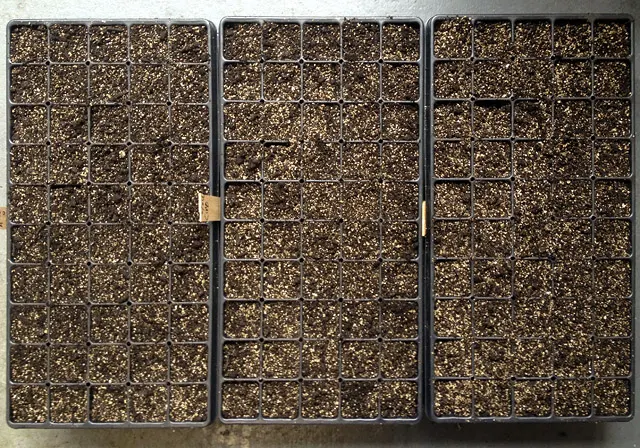Vermiculite Sandwich with Extra Onions
I have extra, unused rows in my garlic field. At first I thought I would fill them with tomatoes, potatoes, green beans and the like. Now I'm thinking that's just too much effort at this time. So, what to fill those empty rows with then? Onions. From seed.
I purchased these 5-inch deep, 2 by 2-inch wide cell trays, eschewing positive cost to cell-count ratios for longer roots, longer tray times, or what is often referred to as leeway.
Large holes at the bottoms and ribbing on the side which purports to fight off root binding.
The team. After last summer's trip to Maine where I saw peat bogs first hand, I decided to try a different approach to a peat-based starter mix. After some hand wringing, I made an on the fly decision at the Agway to go with a decent compost (no sludge) and a generous dose of vermiculite.
The resulting mix was light, held moisture, yet appeared to drain well enough. It wasn't spongy the way peat-based mixes are, but in fact was somewhat grainy so that it was tough to poke holes for seeds to drop into.






Comments
Post a Comment
Go ahead and comment! I will moderate and delete the spam. Thx